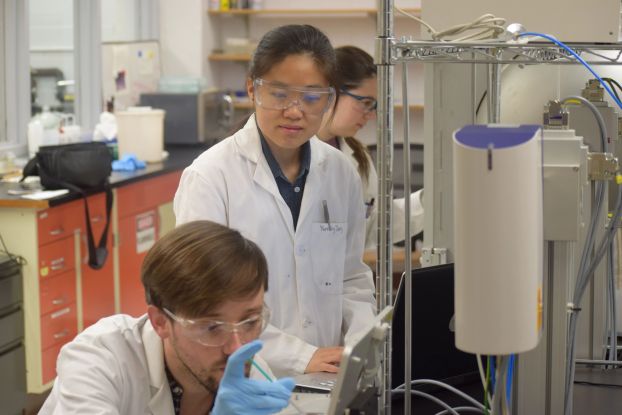
NSF has long invested in expanding science, technology, engineering and mathematics (STEM) career pathways. Yet there is still much work to do: enrollment and degree data for Master's and Ph.D. programs in STEM fields show persistent, significant disparities for domestic students. A recent paradigm shift from a "pipeline" of talent and workforce development toward a "braided-river" notion has helped facilitate new on-ramps to STEM, and more attention is being given to reskilling, upskilling and cross-skilling through technical training, apprenticeships and other education and training formats.
The CHIPS and Science Act of 2022 authorizes significant investments in accelerating key technologies (e.g., advanced manufacturing, advanced wireless, artificial intelligence, biotechnology, quantum information science, semiconductors, and microelectronics) and in the development of a highly skilled diverse workforce that can support current and future innovation in these areas.
From May to June 2023, NSF requested input on ways to make educational pathways into careers in key technologies accessible to any American interested in participating in the U.S. research and innovation enterprise through the Future Topics for Workforce Development in Emerging Technology Career Pathways (NSF 23-100) Request for Information (RFI).
About the responses
NSF received more than 170 responses to this RFI, comprising contributions from institutions of higher education; government departments, agencies, and offices; startups and small businesses; nonprofits; vocational and workforce fields; elementary, middle, and high schools; and organized labor. Authors agreed to allow NSF to make their responses public.
NSF will use the information submitted in response to this RFI to help inform future program directions, including potential funding opportunities.
The RFI asked the following questions:
- Describe the greatest opportunities or challenges to creating flexible and affordable training programs (for technicians, practitioners, researchers, students, etc.) needed to build an inclusive, well-paid, domestic workforce in emerging technology careers.
- What have been some of the most effective strategies to removing barriers and providing support for a diverse, inclusive STEM student population and STEM workforce in emerging technology fields?
- Describe opportunities and challenges to facilitate a learner’s ability to transition from one educational pathway to another (e.g., from a technical training program to an undergraduate program) to support lifelong continuous learning.
- Describe current gaps or new opportunities to attract more domestic students at the undergraduate level (associate and bachelor's) and the graduate level (master’s and doctoral) into specific STEM majors that lead to emerging technology career pathways.
- Describe strategies to leverage cross-sector resources, including those of industry, academia, government, non-profits, and any other sectors interested in the future emerging technology workforce. Name key partners with whom NSF could work in this endeavor and provide their expertise and contact information.
- Other considerations. Share other relevant aspects or considerations to facilitate STEM pathways into emerging technology fields.
The table below lists the full set of respondents to the RFI. Their responses to the RFI questions can be downloaded here:
NSF removed names and/or responses from colleagues who did not give NSF permission to display their name and/or response. NSF also removed entries which contained no data and responses that were unrelated to the questions asked, including those containing objectionable content.


